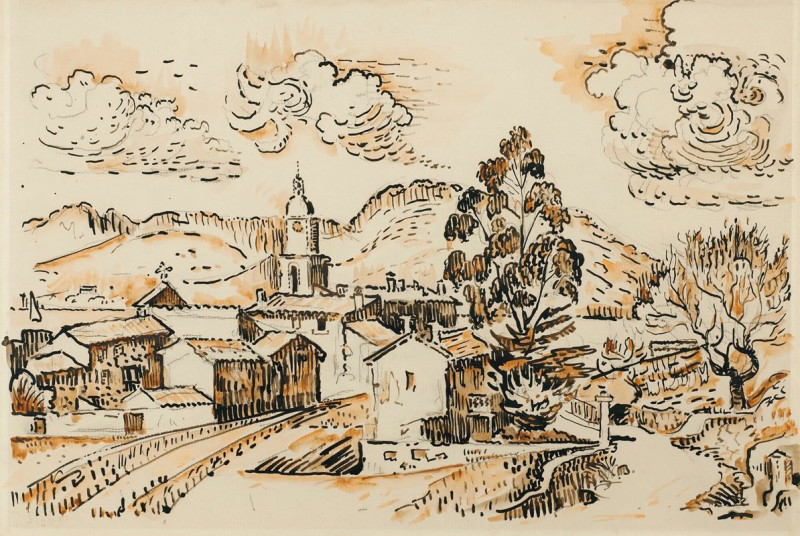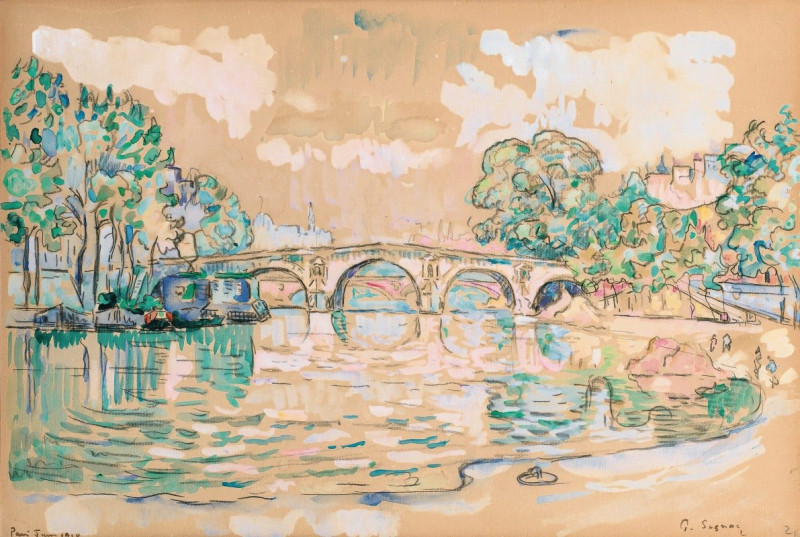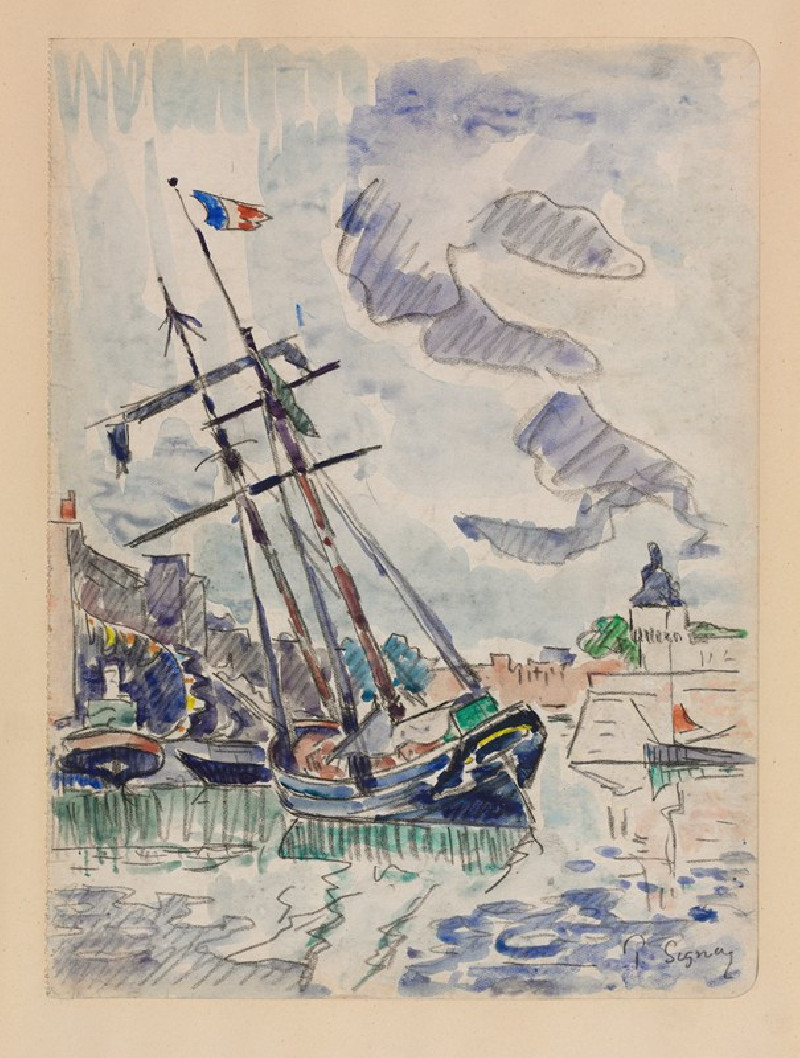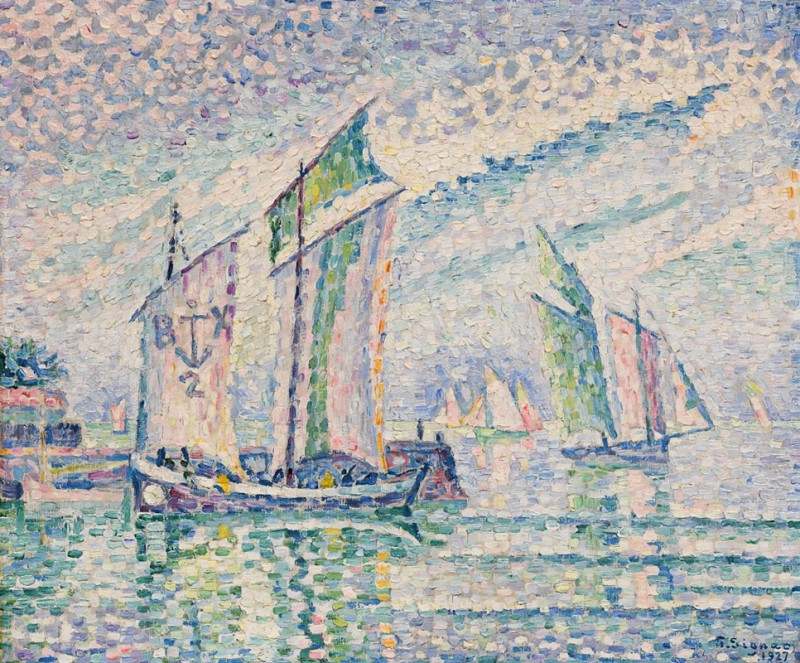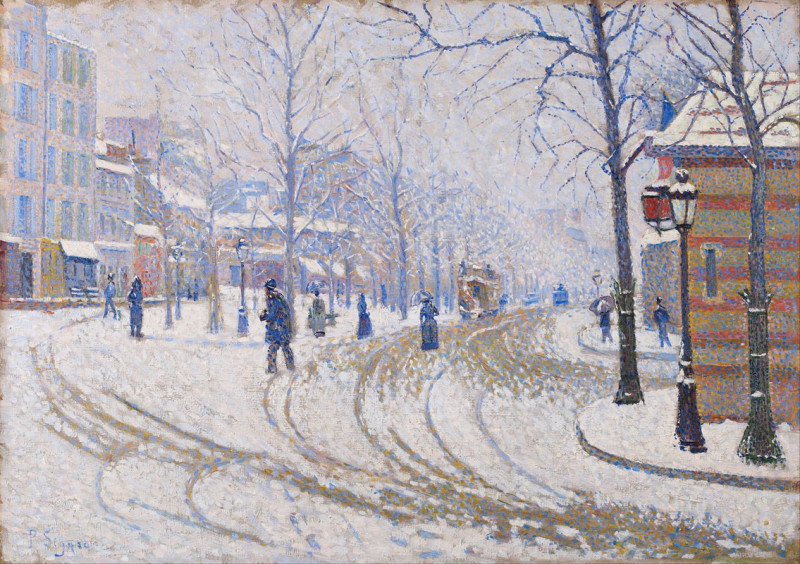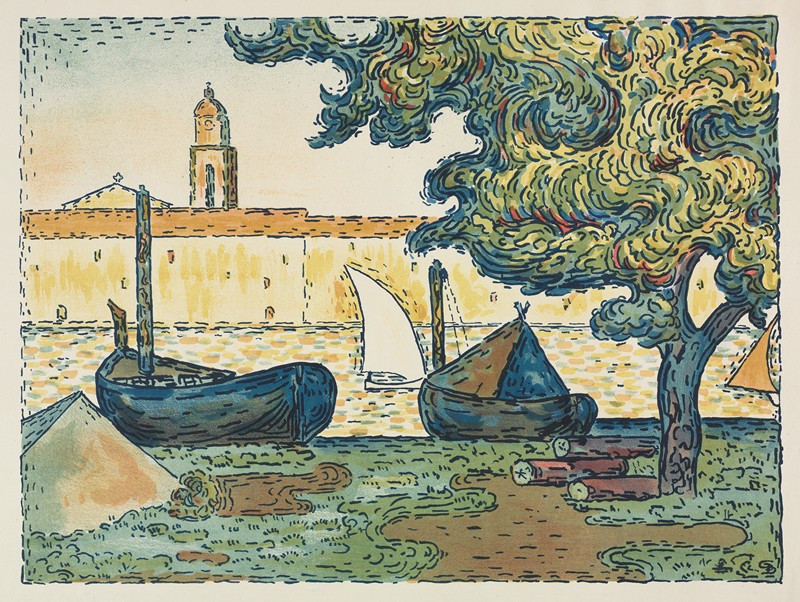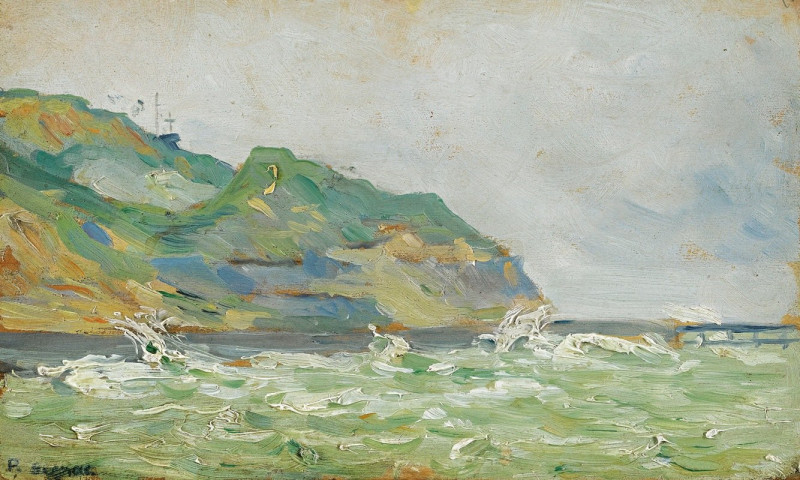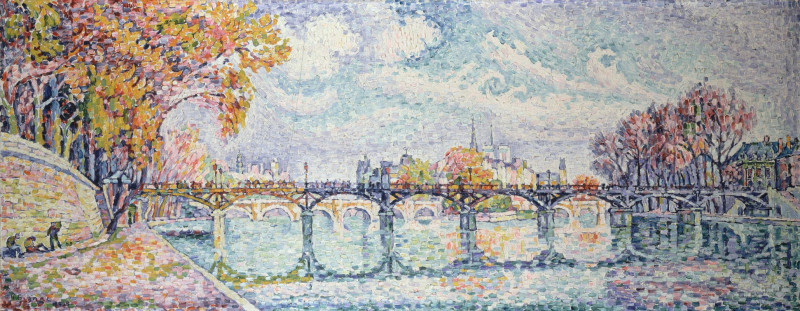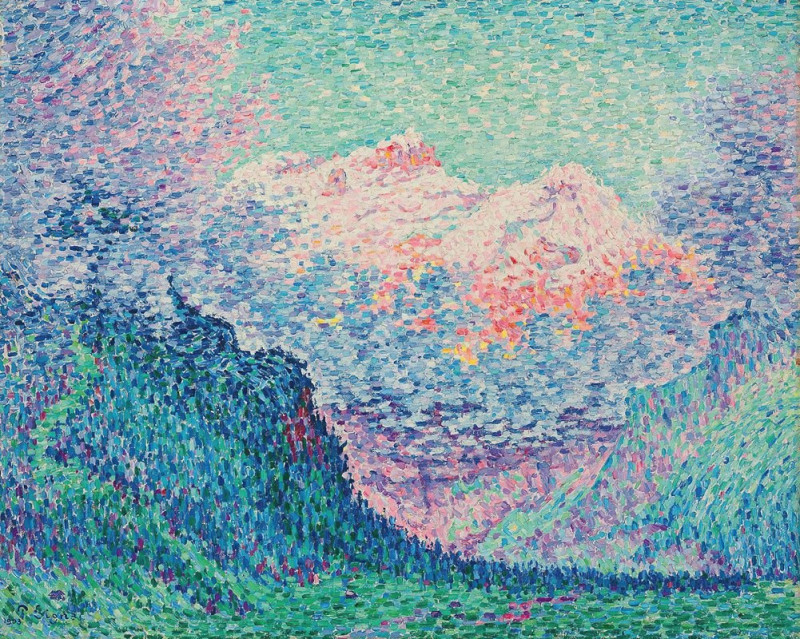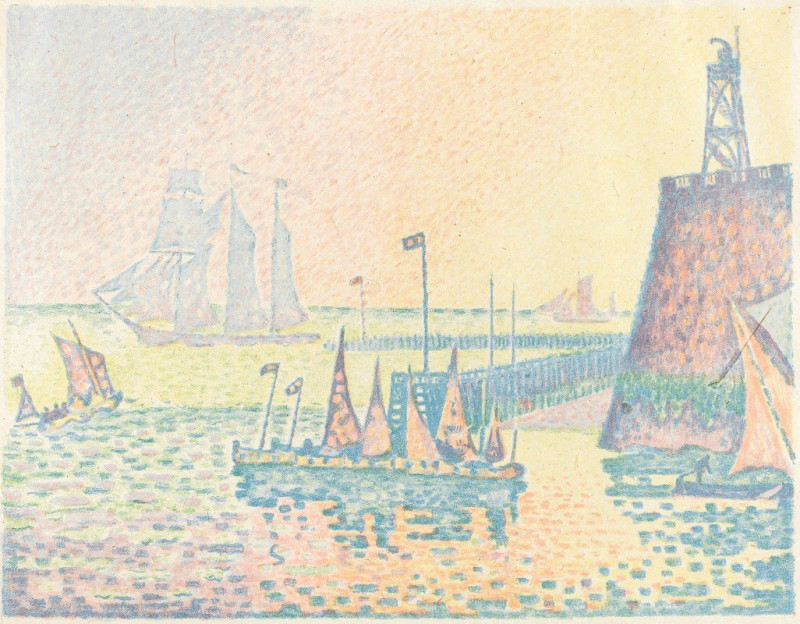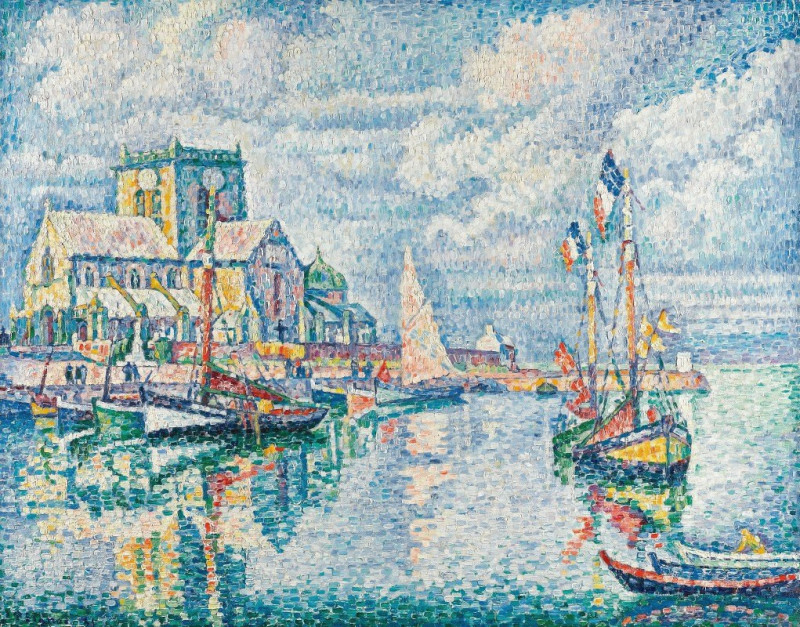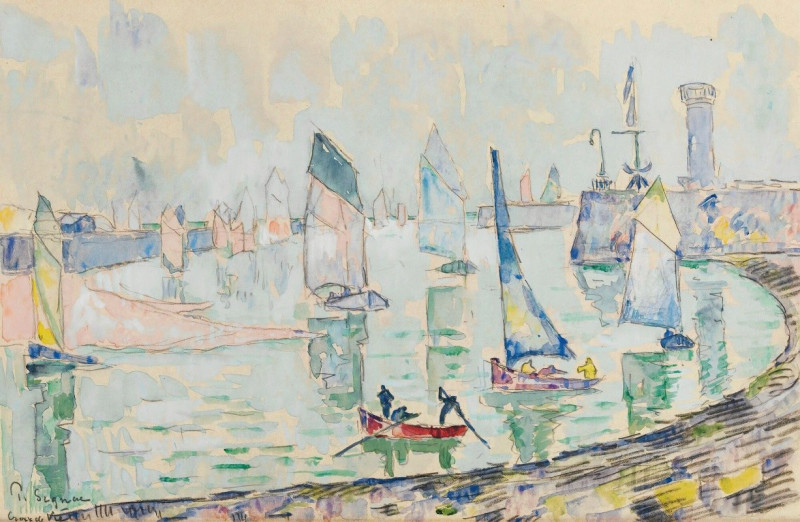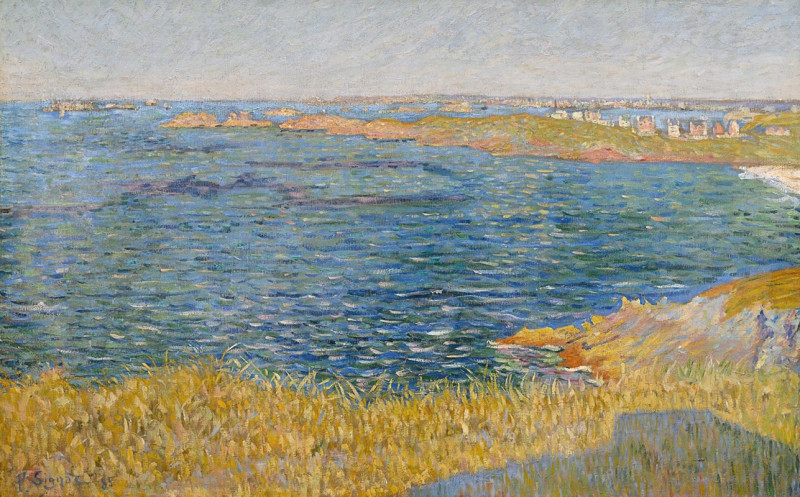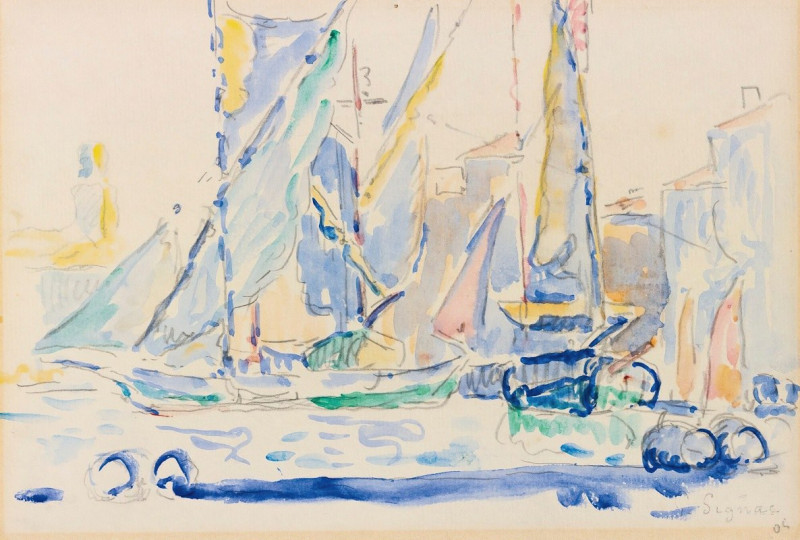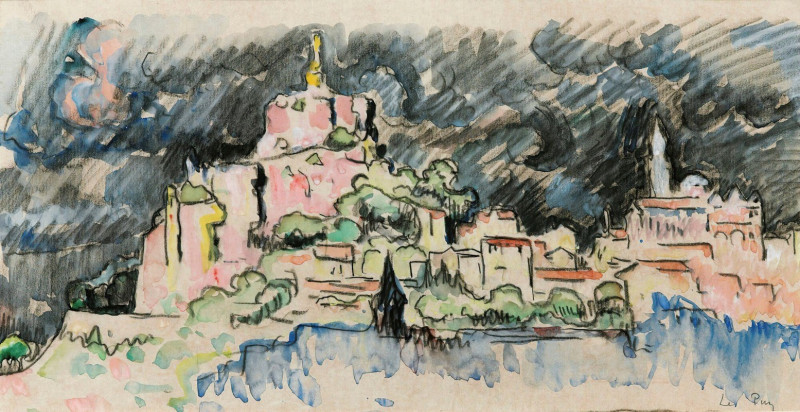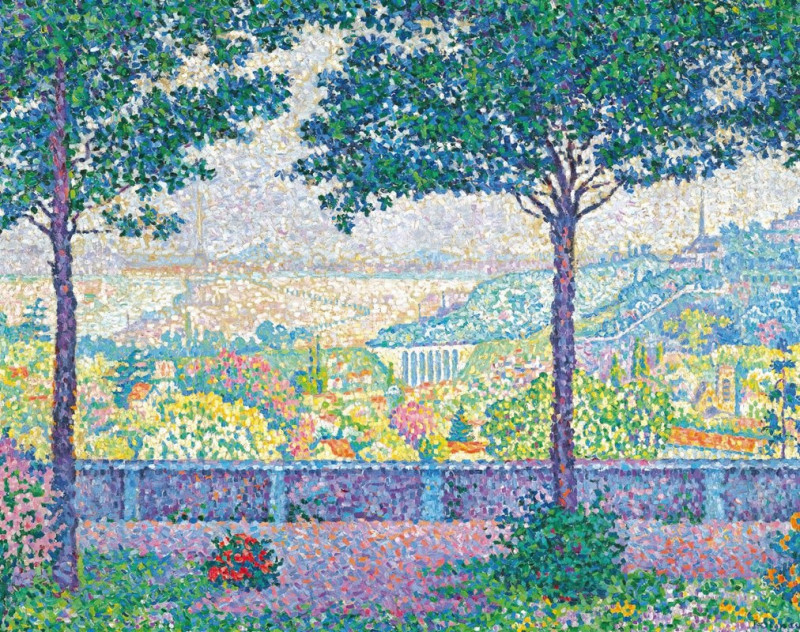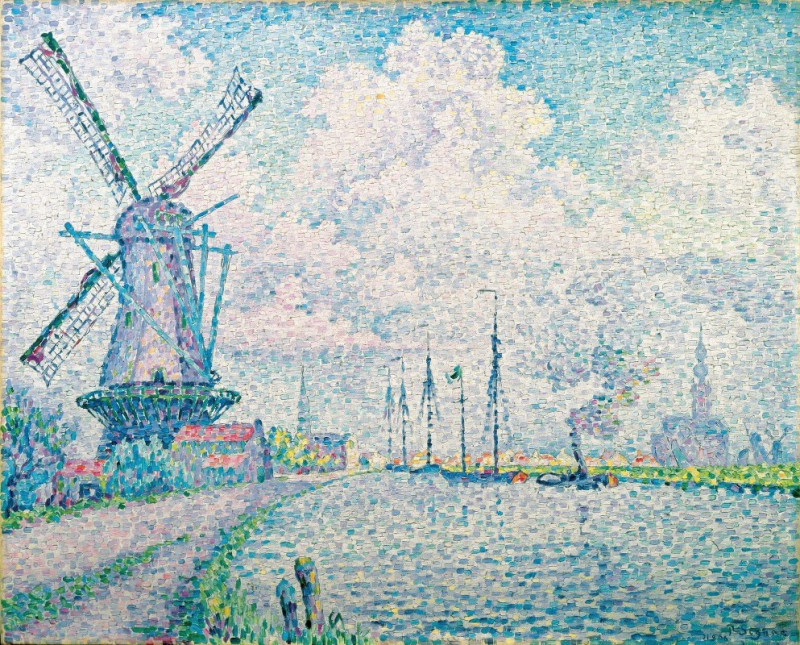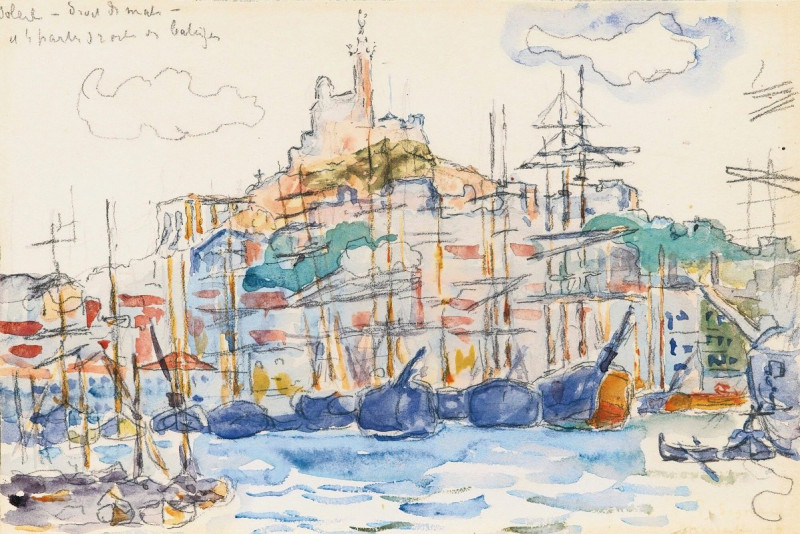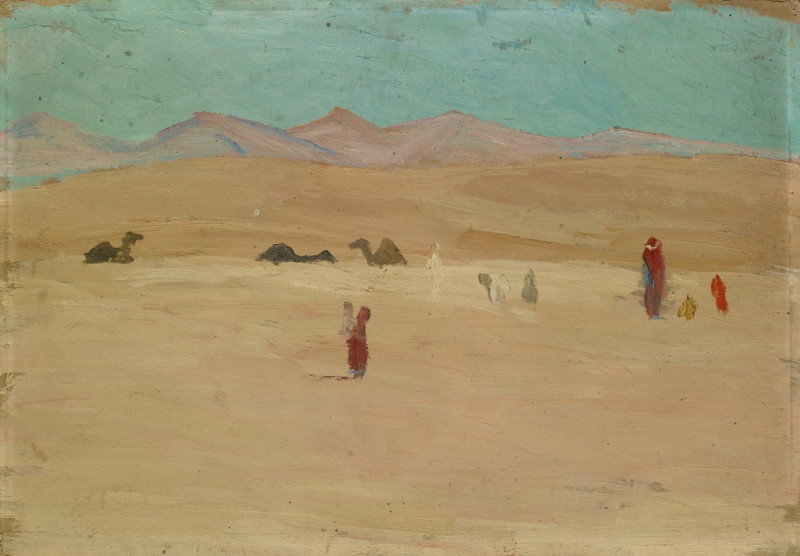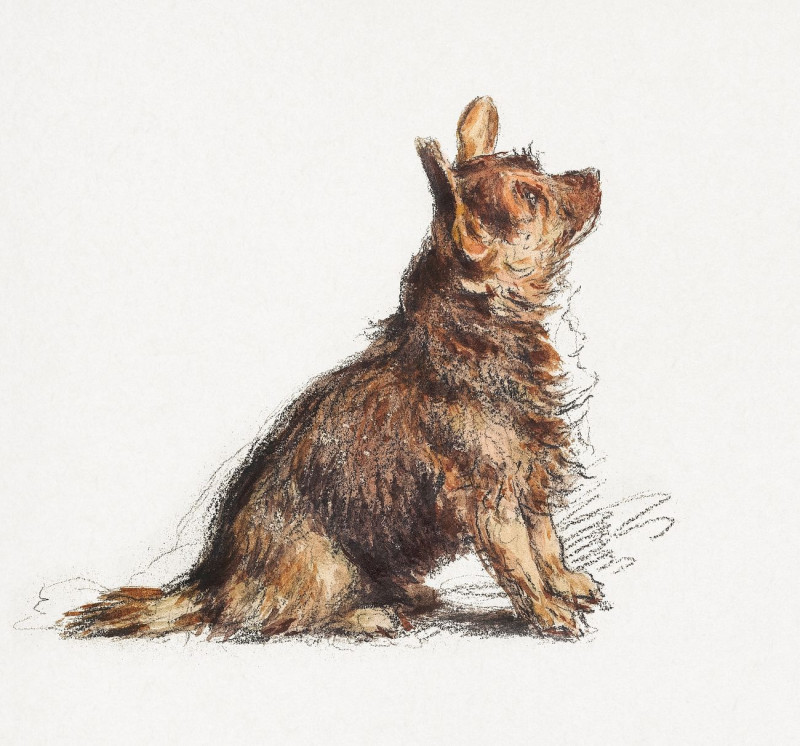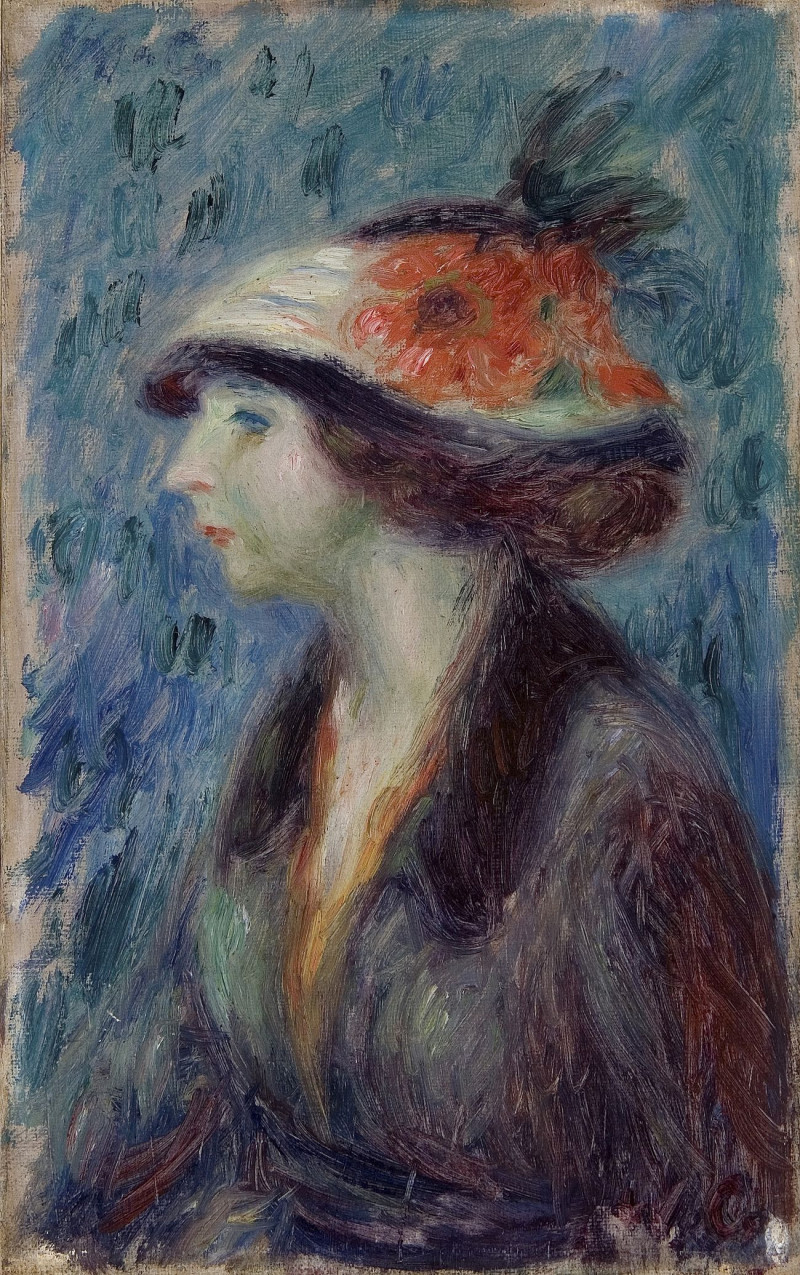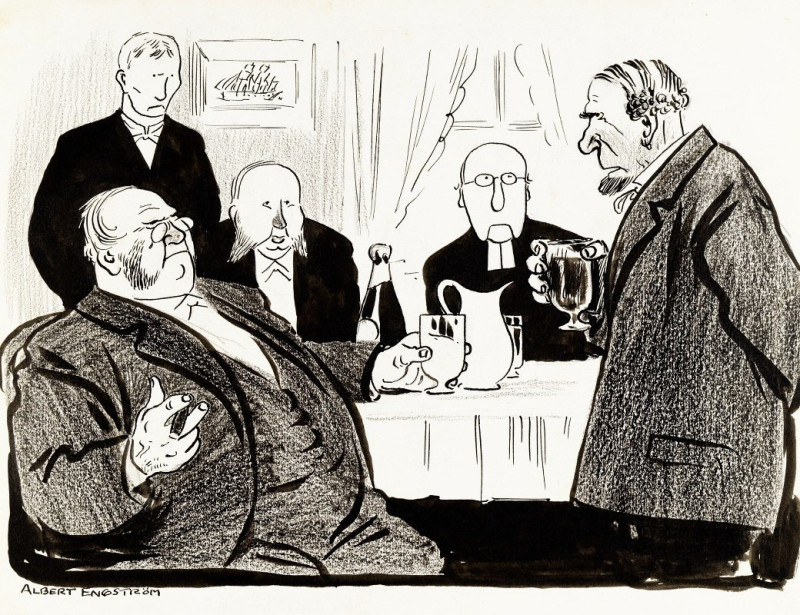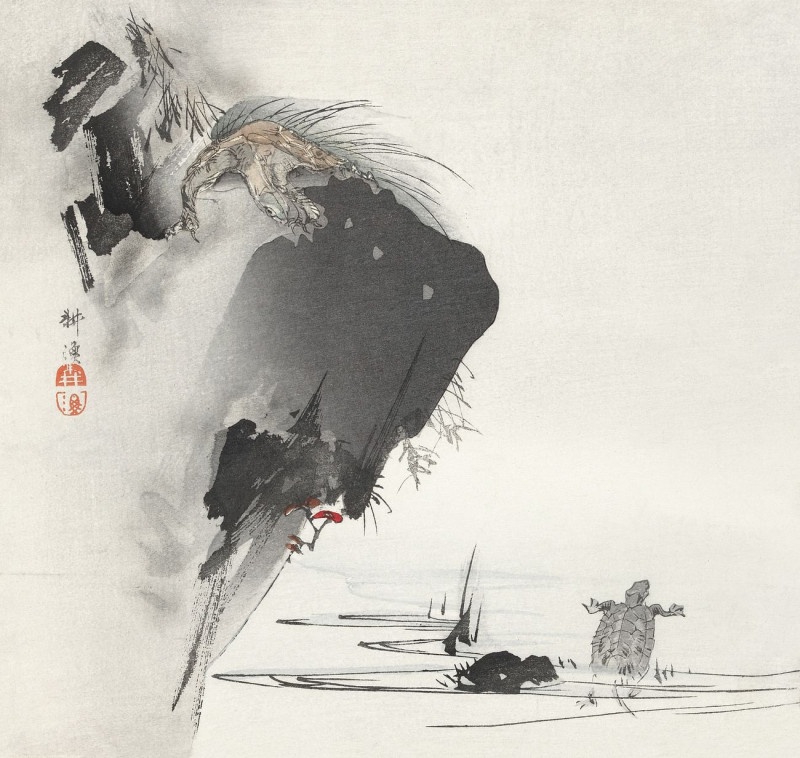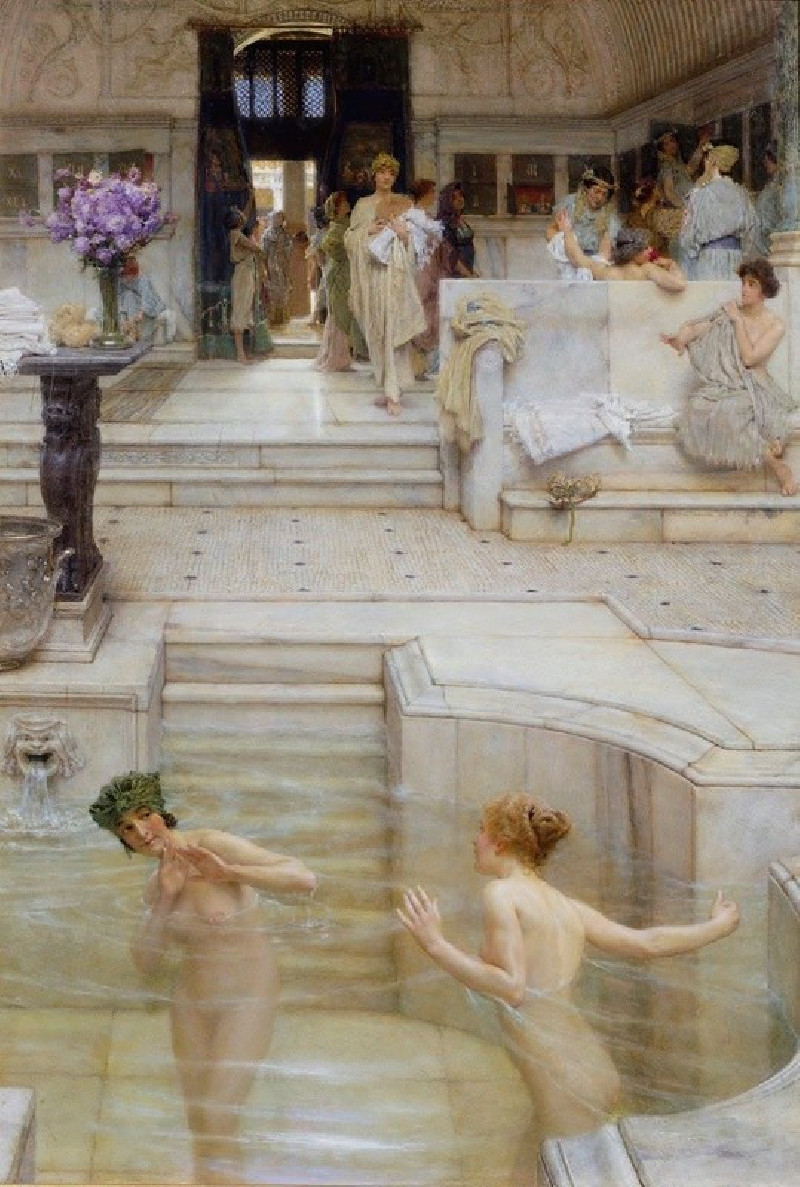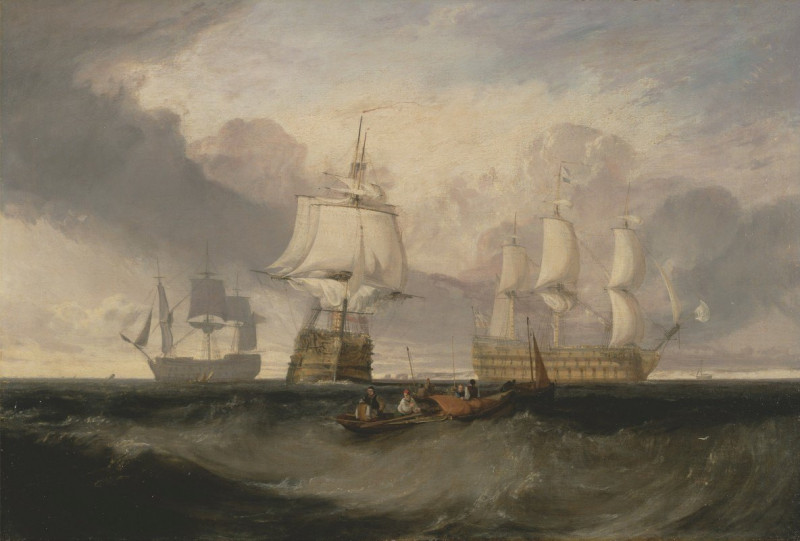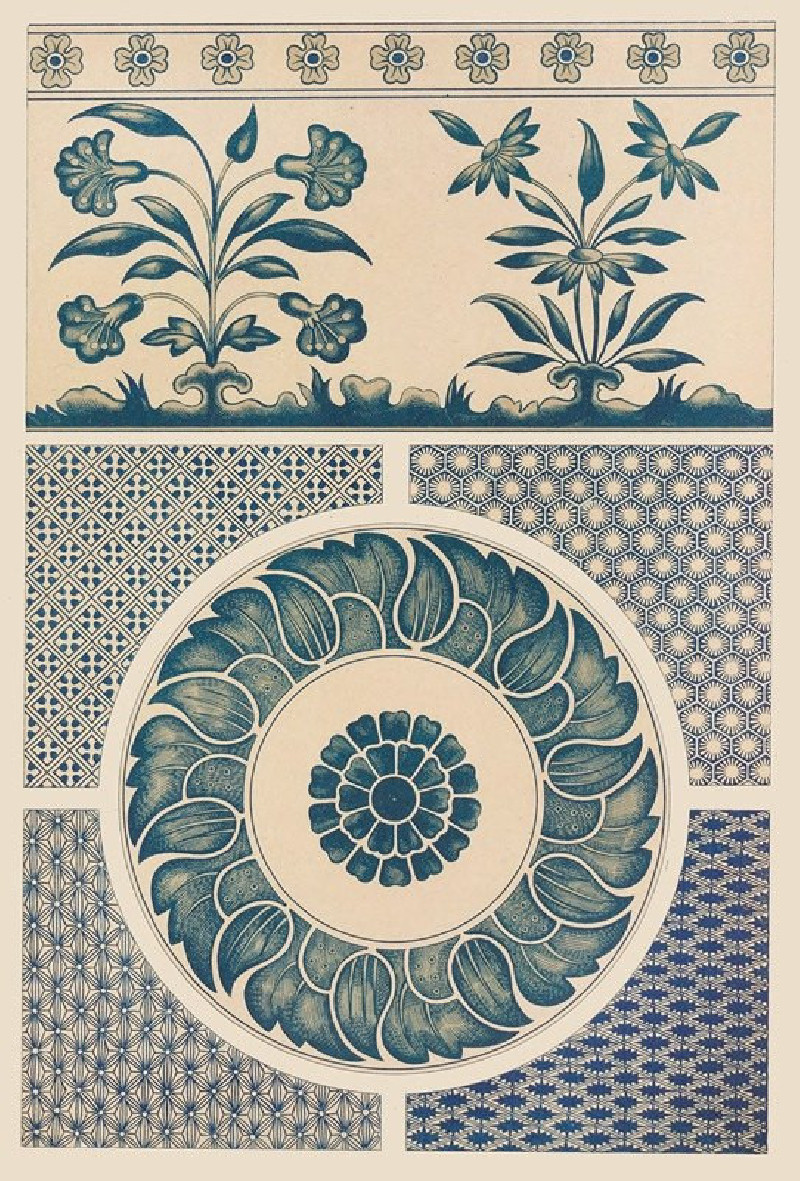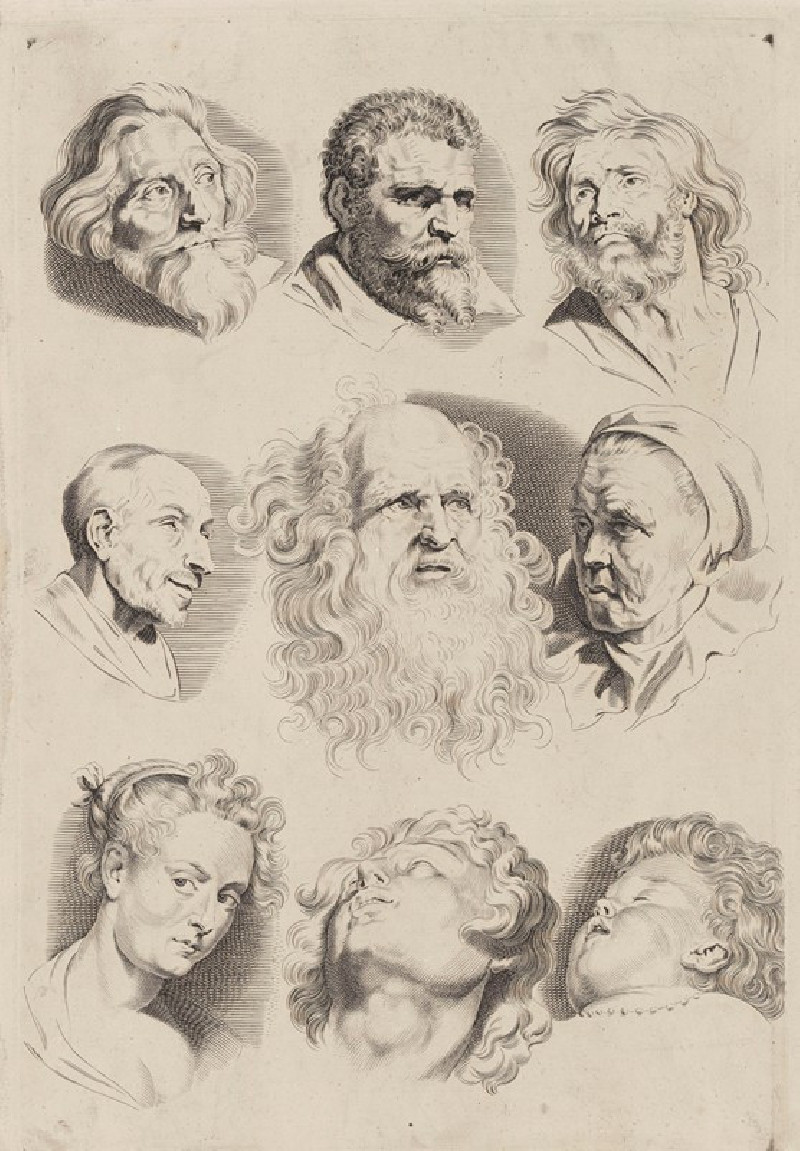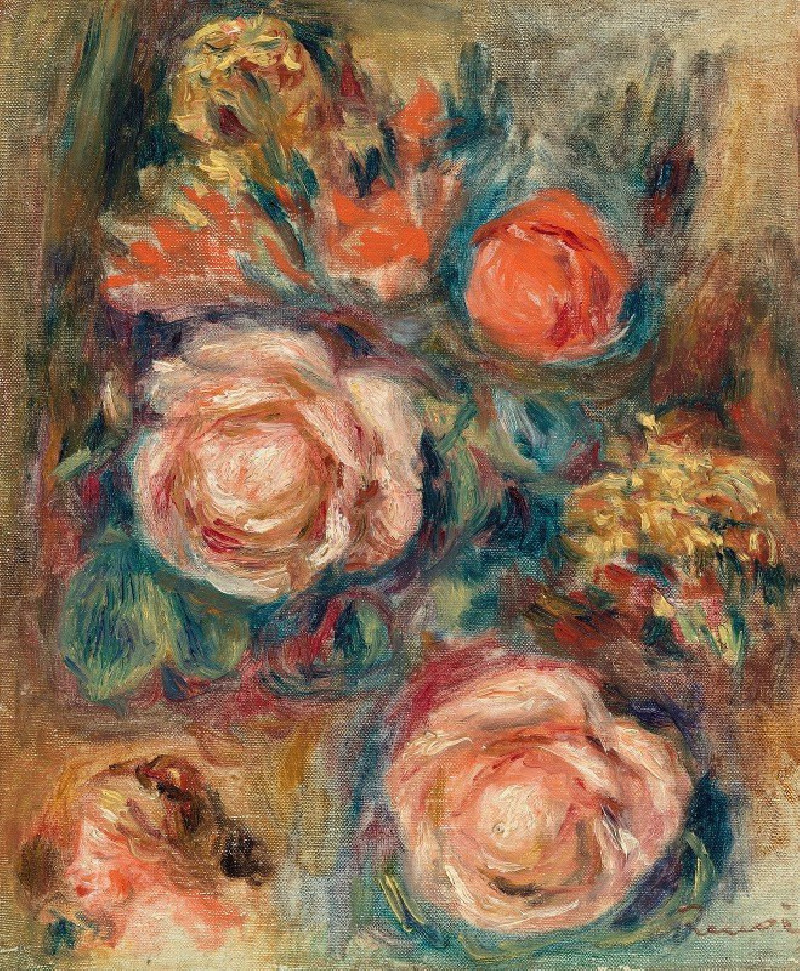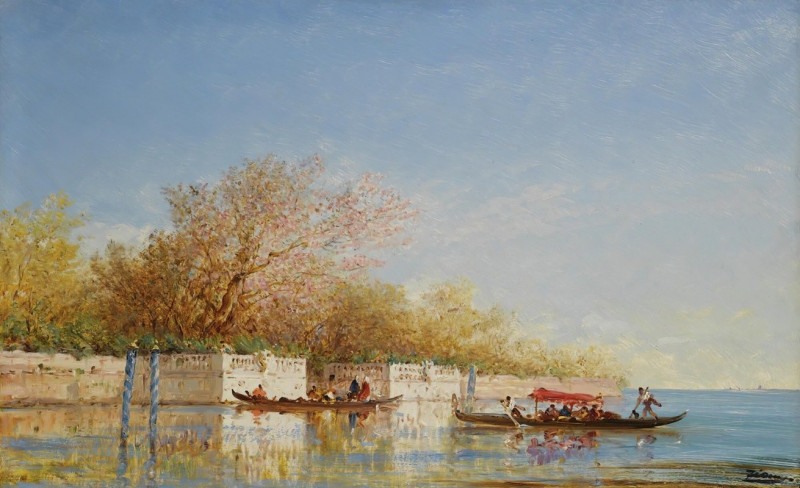Petit Andely-The River Bank
Technique: Giclée quality print
Recommended by our customers
More about this artwork
This painting, "Petit Andely-The River Bank" by Paul Signac, is a vibrant and vivid watercolor scene that captures the enchanting landscape of Petit Andely, a locale in France. The artwork is characterized by Signac's use of bold, fluid lines and a lively color palette, which imparts a sense of vitality and movement to the depiction.The composition features a serene riverside setting with a small boat moored along the bank, seemingly ready for a journey along the calm waters. The foreground displays gentle ripples on the water, creating a reflective surface that mirrors the sky and the lush greenery along the shores.Most striking in the painting is the spirited use of color across the landscape, with patches of pink, yellow, and orange suggesting a lush, fertile valley. The backdrop of the scene showcases a quaint village nestled among rolling hills. The church, with its prominent spire, dominates the village skyline, suggesting its central role in village life.Floating above all is a sky streaked with soft blue and wispy clouds, which echoes the easygoing mood of the river scene. Overarching trees on the right add a dynamic touch to the canvas, their leaves depicted in blotches of green and blue, dancing as if in a light breeze.Overall, Paul Signac’s piece is not just a literal representation but a lively and somewhat whimsical portrayal that uses color and form to evoke the beauty and tranquility of the riverside setting at Petit Andely.
Delivery
Returns
Paul Signac (1863-1935) was a French Neo-Impressionist painter. Together with Georges Seurat, Signac developed the Pointillism style. He was a passionate sailor, bringing back watercolor sketches of ports and nature from his travels, then turning them into large studio canvases with mosaic-like squares of color. He abandoned the short brushstrokes and intuitive dabs of color of the impressionists for a more exact scientific approach to applying dots with the intention to combine and blend not on the canvas, but in the viewer's eye.




